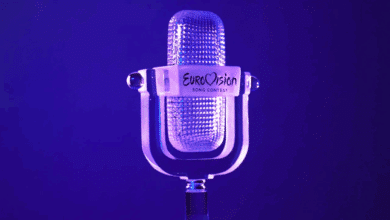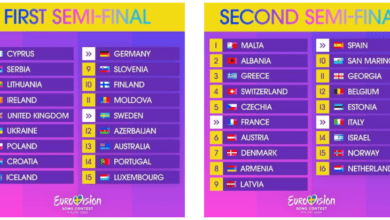What are the "Big 5" at Eurovision?
The evolution of the Big 5 concept at Eurovision: a history of prestige and controversy
Eurovision is much more than just a competition: it's also a soft power tool, a showcase for culture, creativity and creativity. international cooperation in the field of broadcasting. At the heart of this event is a group of countries known as the " Big 5" . But why do these countries have direct access to the final, regardless of their previous performance? The answer lies in their role as crucial financial supporters of the competition, and in the organisation and coordination provided by the European Broadcasting Union (EBU).

The Fantastic 5 (or not)
The Big 5 concept was born in 2000. At that time, it became clear that certain countries were making significant contributions to the financing of the EBU and, through its organization, the Eurovision Song Contest. These countries, initially France, Germany, Spain and the United Kingdom, were designated as the "Big 5" » contributors because their financial support was vital to guarantee the continuity and quality of the contest.
The idea of the Big 4 » (yes, count back, there were only 4 at the beginning) was well received, but over the years an update has been necessary to reflect the evolution of Eurovision. In 2011, Italy joined the band, transforming the Big 4 into the Big 5. This expansion was welcomed by fans and participants alike, further enhancing the prestige associated with these nations.
Advantages and controversy surrounding Big 5 status
For the Big 5 countries, the main advantage is obvious: they can skip the semi-final stage and qualify directly for the final. This gives them maximum visibility and an opportunity to compete for victory without having to go through the preliminary stages. However, this automatic qualification has also been a source of controversy.
Some critics have accused the Big 5 of enjoying an unfair advantage, arguing that their automatic qualification could make them less motivated to put in high-quality performances. In addition, some members of the Big 5 have had disappointing results in recent years, calling into question their privileged place in the competition.

The evolution of the concept over the years
Despite the criticism, the Big 5 concept continues to evolve. In 2016, the EBU introduced a new rule allowing Big 5 countries to choose their position in the final, giving them flexibility and additional control over their performance. In addition, the EBU announced at the 2024 edition of the Eurovision contest in Malmô that the Big 5 countries would now perform live during the semi-finals, adding a new dimension to their participation. Previously, they were only allowed to perform once in the final, and a 20-second extract of their song during the semi-finals, which didn't really give the song time to settle in or the artist time to connect with their audience.
The introduction of semi-finals in 2004 also led to adjustments in the participation rules. From 2004 onwards, the maximum number of participants allowed in the final was limited to 24 (2004-2007) and 25 (2008-2010). Since 2012, this maximum has risen to 26, including the members of the Big Five (with the famous 20-second extract), the host country and the 10 qualifiers from each semi-final.
Exceptions to this rule were made in 2011, 2015 and 2022. In 2011 and 2022 respectively, Germany and Italy (as hosts) were both members of the Big Five, limiting the number of entries to 25 in the final. This rule applies to any Big Five country that wins the competition in the future.
When Australia made its debut in 2015, it was also granted automatic access to the final as a guest country, bringing the total number of participants to 27. This is no longer the case.
Who are the Big 5 countries today?
The current members of the Big Five » are :
- France
- Germany
- Spain
- United Kingdom
- Italy
The new rules for 2024
With the introduction of new rules allowing artists from the Big 5 to perform live in the Eurovision semi-finals, a new era of fairness and experimentation is opening up for these countries. Whereas previously their automatic qualification for the Final could be seen as an undeniable but sometimes controversial advantage, from now on they will have the opportunity to share their music with a wider audience from the preliminary stages onwards.
We saw La Zarra in Liverpool in 2023 experience some difficulties as the rehearsals approached. At Eurovision and Friends, we believe that this development offers the Big 5 artists the opportunity to experience the electrifying atmosphere of the Semi-Finals, to confront the reactions of the audience, to establish their song with a large audience and to benefit from increased visibility with Eurovision fans around the world. This also helps to reduce perceived inequalities between the candidates and to strengthen the fairness of the contest.

While their place in the Final remains guaranteed, this new approach offers them a unique chance to connect with the Eurovision audience in a more direct and immersive way. It demonstrates Eurovision's determination to continue evolving and adapting to offer a rewarding experience for artists and audiences alike.






